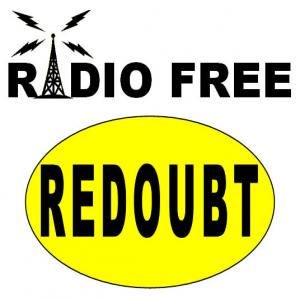

Welcome to a special Mother’s Day edition of “Bushwhacked” a weekly exploration of the weirdly wonderful English language. The word mother in the form we use it now, with a “TH” in the middle has been reliably dated to about the 16th century. However, it’s probably older than that. Prior to then, it existed in different forms, such as “modor” in the Proto-Germanic. As much as the term “Proto-Germanic” conjures up images of ancient Germans, it is actually a term for the language before all...
Welcome to a special Mother’s Day edition of “Bushwhacked” a weekly exploration of the weirdly wonderful English language. The word mother in the form we use it now, with a “TH” in the middle has been reliably dated to about the 16th century. However, it’s probably older than that. Prior to then, it existed in different forms, such as “modor” in the Proto-Germanic. As much as the term “Proto-Germanic” conjures up images of ancient Germans, it is actually a term for the language before all Germanic languages from which languages such as English developed, thus the prefix “proto.” “Proto” came from the ancient Greek, and means “first,” and in linguistics has a special meaning—specifically a “proto language” is the hypothetical ancestor of a whole family of languages. Think about that meaning when you hear words such as “prototype,” or “protozoan.”
This whole “ancestral language” thing makes sense when you realize how similar the word for mother is in languages that descended from Proto-German. People would have written to their “mothaer” in the earliest written Low German, also called “Old Saxon.” Mothers are called “moeder” if they were Dutch, Mutter if they were German, or “moder” in Danish.Because all of these languages have a common origin, a mom would have known she was being called in any variation.
Speaking of that, there are some cool variations of mother and strange places where the word pops up. For example, a “madrigal” is a type of song. Think renaissance fair music, and you’re about right. The word “madrigal” doesn’t sound anything like “mother,” but believe it or not, it actually ties nicely to the word. Madrigal is a French version of the Latin word “matricalis,” which means “simple and primitive.” Matricalis, is, in turn a derivative of the word “matrix” which means “womb,” cycling us nicely back to mother from this song form that was simple by the standards of its day.
A metropolis also gets its name from mother. Technically, it means “mother city” made up of meter (mother) and polis (city-state). This word first appeared in middle English, but it’s history snakes back much further, coming from Latin which stole it from ancient Greek, something they were fond of doing. In this case, the word “meter” means mother in the sense that it a metropolis is a city-state, and a parent-state that spawns smaller towns and cities around it. Now, of course, we think of a metropolis as a bustling city, complete with suburbs.
All images of June Cleaver aside, mother’s day was really much more about activism than apple pie. About 150 years ago, Ann Jarvis, a mother living in West Virginia, organized what she called a “Mother’s Work Day” to advocate better health conditions for children in Appalachia. This precursor to mother’s day was more about advocacy than celebration, and Mrs. Jarvis organized mothers because she knew they would care most about her cause. Mrs. Jarvis continued her annual “mother’s Work Day” until she died in 1905.
Meanwhile, Julia Ward Howe the suffragist who wrote the lyrics for “Battle Hymn of the Republic,” proposed a “Mother’s Day” to spur mothers to become political activists, but no one really took her up on the idea. Despite the lack of excitement, she continued to encourage mothers to join her in rallies for peace and against the Franco-Prussian war. Her argument was sound: “why do not the mothers of mankind interfere in these matters to prevent the waste of human life which they alone bear and know the cost?” Like Ann Jarvis, she assumed that mothers would be drawn to her cause because it affected their children, declaring “As men have often forsaken the plow and the anvil at the summons of war, let women now leave all that may be left of home for a great and earnest day of counsel.” Unfortunately, she was done in by her own cause, as activists of the time were more interested in gaining suffrage for women than in rallying them for peace. Her Mother’s Peace Day Festivals limped along for another 2 years after Howe died in 1910, her before dying out themselves.
In 1905, Ann Jarvis died, and her daughter, Anna, began a campaign a mother’s day holiday. The first real mothers day was a church service in honor of Ann Jarvis in 1907, where she handed out her mom’s favorite flowers.
Anna Jarvis worked hard to gain support for her “Mother’s Day Work clubs,” that worked to improve sanitation and reduce infant mortality, and by 1911 almost every state in the country celebrated Mother’s Day. In 1912, Anna Jarvis’ home state became the first to make it official, however, this is where the holiday began its metamorphosis into our current mother’s day. The state’s mother’s day celebration emphasized a celebration of women’s role in their family, not any sort of activism.
In 1914, President Woodrow Wilson proclaimed that mother’s day was a national holiday, and set the date for it as the second Sunday in May. Over time, the day began to stray further from its activist roots, and towards commercialism. Anna Jarvis once said “I wanted it to be a day of sentiment, not profit.” It appalled her to see a holiday that had the potential to motivate women to lobby for issues about which they cared turned into a day where we clean our consciences by tossing expensive gifts at our mom’s. She hated the idea of selling flowers, despite arguably being the one to originate the concept of flowers with her white carnations years before. This year, we are expected t spend $1.9 billion on flowers for mother’s day.
Jarvis was horrified by mother’s day cards, calling them “a poor excuse for the letter you are too lazy to write.” Yet, this holiday can now be rightly called a “Hallmark Holiday,” as we spend about $671 million in cards for mom, making this the 3rd biggest card holiday in the U. S.
Anna Jarvis lived to see the mother’s day holiday she created thrive, but in a mutant form against which she railed until she died in 1948. She filed lawsuits and even criticized first lady Eleanor Roosevelt for being a part of a mother’s day committee that did not adhere to the original concepts for mother’s day. This must have been especially bitter for Jarvis, considering Mrs. Roosevelt’s political clout.
Now, mother’s day is a big business, like many holidays in the U.S., and this year, we’re expected to spend $14.6 billion dollars on our 83 million mothers. This is nothing compared to Christmas and it’s price tag of over $446 billion, but it’s still a lot of money for a holiday that was originally intended to mobilize mothers to fight in unison for a cause.
Now, all of this is not to put a damper on that breakfast-in-bed you made for your mom this mothers day (you haven’t? Then. get your butt in the kitchen and start cooking, kiddo. And don’t forget to clean up!). But it does server as a reminder that mothers day has a greater meaning and purpose than simply saying thanks to the woman who birthed and raised you (although that’s a good start). There’s a movement afoot to resurrect the concepts for which Jarvis and Howe fought so hard, and encourage women and children to use Mother’s day to celebrate moms while working towards a greater good.
The one that aligns most closely to Anna Jarvis goals, in my opinion, is momsrising.org. They sell clever apparel to fund their fight for things important to families—paid sick leave, affordable safe childcare, and universal health care. Their products are clever and cute enough that they work as gifts even without the added social benefit. But they also have other ways in which you can engage in activism—so wander over to their website and do something global after you’ve done something for your mom.
The one that is the closest to Howe’s vision, the Ploughshares Fund, which works to completely change the way we see nuclear arms and to create a more peaceful world. They use grants and advocacy to help make the future of our world more peaceful for our children. Howe would surely approve. You can donate as little as $10 and know that 100% of your donation makes an impact. If you’ve already spent your money on a gift for mom, then waltz over to their website and vote for them in their effort to garner a donation from “Credo Mobile” and more funding for the cause.
Either way, take an opportunity to pay homage to the origins of this holiday even as you celebrate your own mother.Now, don’t you have a breakfast in bed to prepare?
http://www.ploughshares.org/give-now
http://www.momsrising.org/
Some information for todays podcast was gathered from:
http://www.word-origins.com/definition/mother.html
http://www.goddessgift.com/pandora%27s_box/mothers-day-history.htm
http://dictionary.reference.com/browse/metropolis
http://www.sevensidedcube.net/general/2010/anna-jarvis-the-reason-for-mothers-day/
http://womenshistory.about.com/od/mothersday/a/anna_jarvis.htm
http://articles.moneycentral.msn.com/Investing/Extra/the-business-of-mothers-day.aspx
http://www.salon.com/life/broadsheet/2010/05/07/mothers_day_origin_open2010
http://www.slate.com/id/2217890
View more
Comments (3)
More Episodes
All Episodes>>Create Your Podcast In Minutes
- Full-featured podcast site
- Unlimited storage and bandwidth
- Comprehensive podcast stats
- Distribute to Apple Podcasts, Spotify, and more
- Make money with your podcast
It is Free












